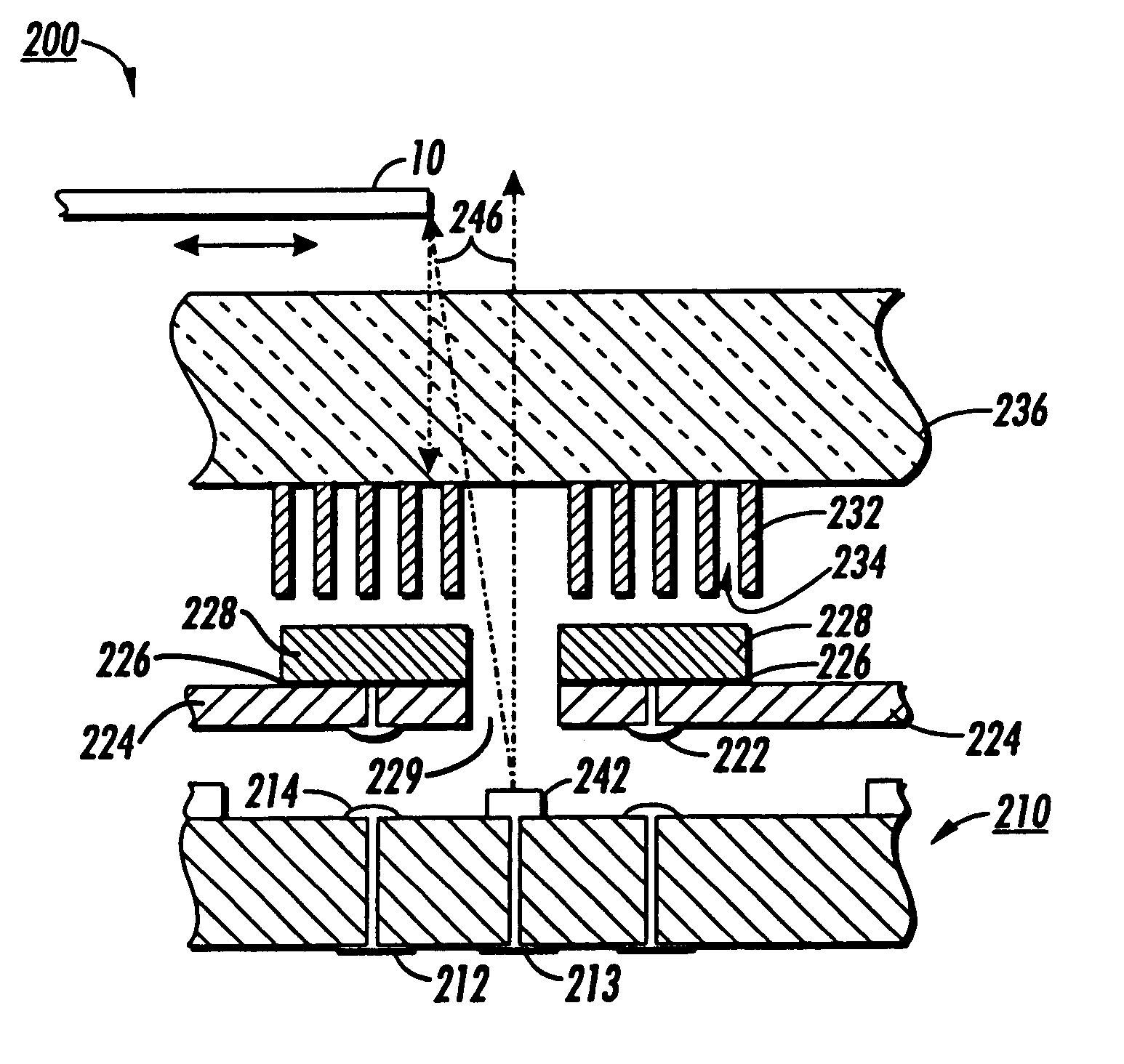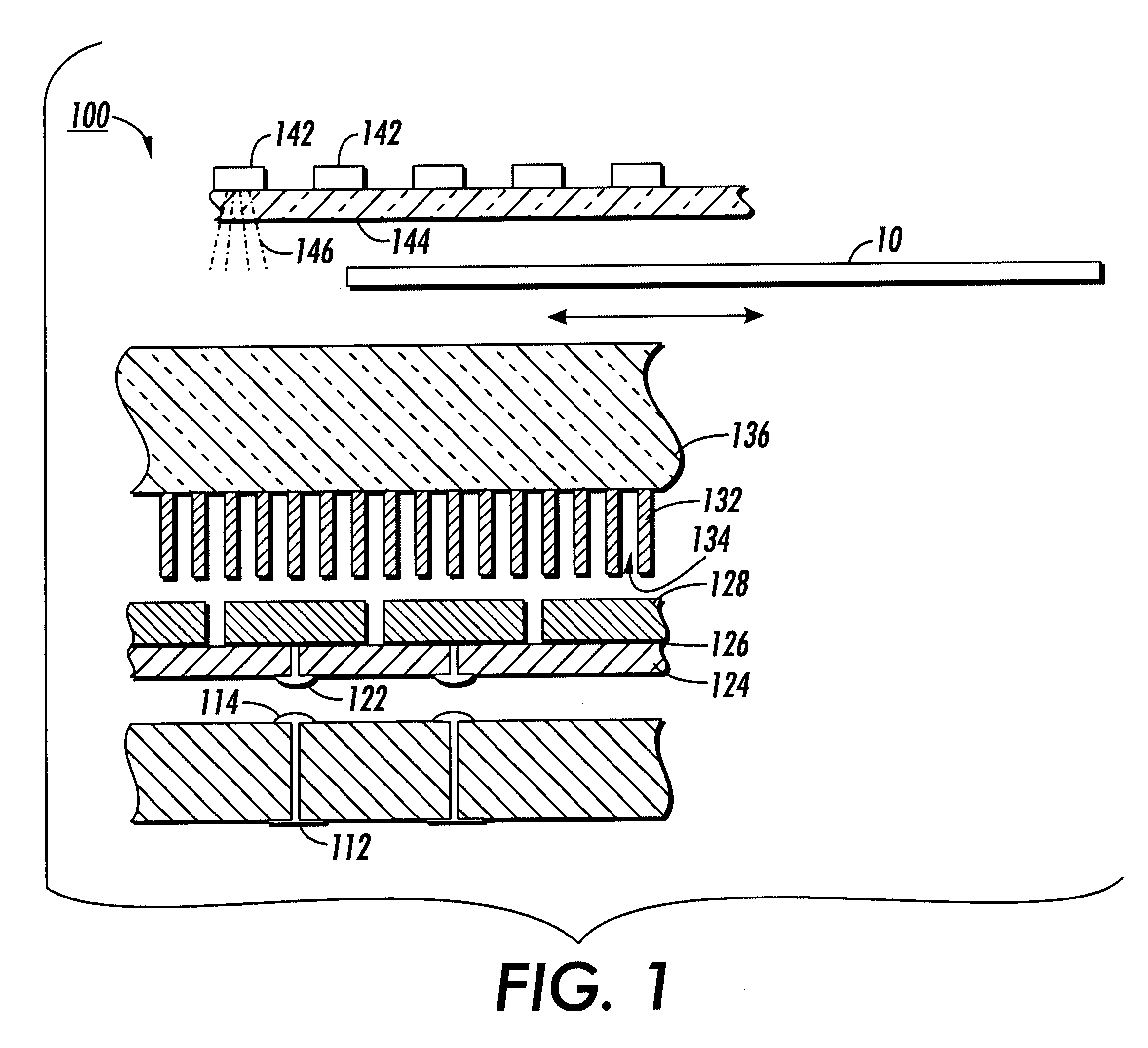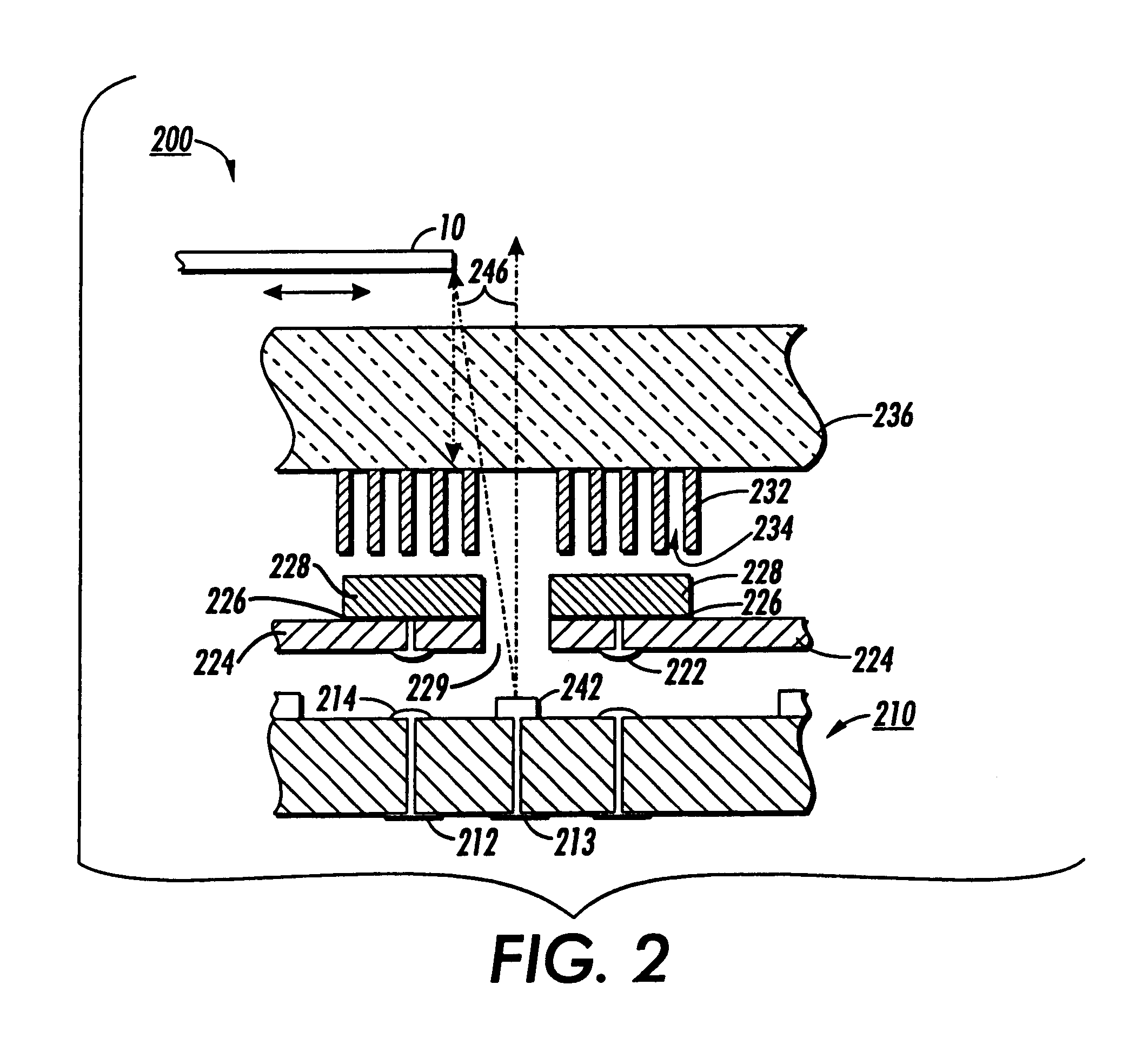Two dimensional object position sensor
a two-dimensional object and position sensor technology, applied in the direction of counting objects on conveyors, using reradiation, instruments, etc., can solve the problems of uneconomical and impractical options, pinpointing the exact location, and small area imaging arrays to sense the position of objects over a large area
- Summary
- Abstract
- Description
- Claims
- Application Information
AI Technical Summary
Benefits of technology
Problems solved by technology
Method used
Image
Examples
Embodiment Construction
FIG. 1 shows a first exemplary embodiment of a large area object position sensor 100 according to this invention. As shown in FIG. 1 the large area object position sensor 100 includes a number of light sources 142 mounted on a transmissive plate 144. The light sources 142 emit light energy 146 towards a transmissive plate 136. An object 10 passing between the transmissive plate 144 and the transmissive plate 136 will block the light energy 146 from reaching the transmissive plate 136. The light sources 142 may be any known or later-developed type of light emitting device, including, but not limited to, infrared light emitting diodes, light emitting diodes, or ordinary light bulbs. As shown in FIG. 1, the transmissive plate 144 may be formed from a rigid material and thus may act as a substrate for mounting the light sources 142. Both the transmissive plate 136 and the transmissive plate 144 may be formed of plastic and / or glass materials and may be rigid or flexible. The object 10 m...
PUM
 Login to View More
Login to View More Abstract
Description
Claims
Application Information
 Login to View More
Login to View More - R&D
- Intellectual Property
- Life Sciences
- Materials
- Tech Scout
- Unparalleled Data Quality
- Higher Quality Content
- 60% Fewer Hallucinations
Browse by: Latest US Patents, China's latest patents, Technical Efficacy Thesaurus, Application Domain, Technology Topic, Popular Technical Reports.
© 2025 PatSnap. All rights reserved.Legal|Privacy policy|Modern Slavery Act Transparency Statement|Sitemap|About US| Contact US: help@patsnap.com



